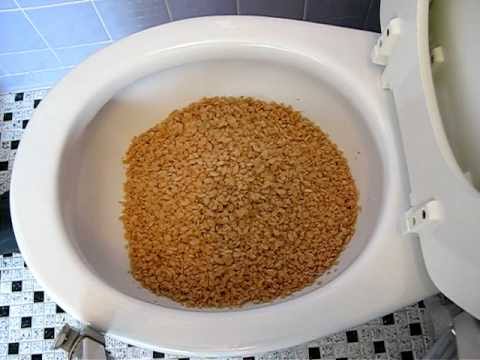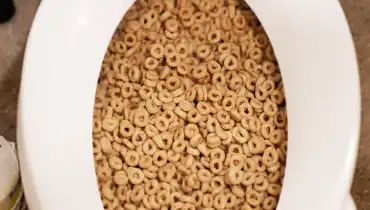Can One to Dispose of Food in the Toilet?
Can One to Dispose of Food in the Toilet?
Blog Article
Just how do you feel when it comes to Is it safe to flush food (especially rice) down the toilet??

Intro
Lots of people are commonly confronted with the predicament of what to do with food waste, especially when it pertains to leftovers or scraps. One usual concern that develops is whether it's fine to flush food down the commode. In this post, we'll delve into the reasons that individuals may consider flushing food, the effects of doing so, and different techniques for correct disposal.
Reasons individuals could think about purging food
Lack of understanding
Some people may not understand the prospective harm triggered by flushing food down the toilet. They may mistakenly believe that it's a harmless practice.
Convenience
Flushing food down the bathroom might look like a quick and simple option to throwing away unwanted scraps, especially when there's no close-by trash can readily available.
Laziness
In many cases, people may merely pick to flush food out of sheer negligence, without considering the repercussions of their activities.
Effects of flushing food down the commode
Ecological influence
Food waste that winds up in rivers can add to air pollution and harm aquatic ecosystems. In addition, the water used to purge food can strain water sources.
Pipes problems
Flushing food can lead to blocked pipelines and drains, creating expensive pipes repairs and aggravations.
Types of food that should not be flushed
Fibrous foods
Foods with coarse structures such as celery or corn husks can get tangled in pipelines and trigger obstructions.
Starchy foods
Starchy foods like pasta and rice can soak up water and swell, leading to clogs in pipelines.
Oils and fats
Greasy foods like bacon or food preparation oils should never ever be flushed down the toilet as they can solidify and cause clogs.
Proper disposal approaches for food waste
Using a garbage disposal
For homes outfitted with garbage disposals, food scraps can be ground up and flushed through the plumbing system. Nevertheless, not all foods appropriate for disposal in this manner.
Recycling
Certain food product packaging products can be reused, minimizing waste and decreasing environmental impact.
Composting
Composting is a green method to dispose of food waste. Organic materials can be composted and utilized to enrich dirt for gardening.
The importance of appropriate waste administration
Minimizing environmental harm
Proper waste administration techniques, such as composting and recycling, assistance decrease air pollution and maintain natural deposits for future generations.
Shielding pipes systems
By preventing the practice of flushing food down the toilet, property owners can stop pricey pipes repairs and preserve the stability of their pipes systems.
Verdict
To conclude, while it might be tempting to purge food down the bathroom for comfort, it's important to recognize the possible repercussions of this action. By taking on proper waste management practices and taking care of food waste properly, individuals can add to healthier pipes systems and a cleaner setting for all.
FLUSH FOOD DOWN THE TOILET?
FLUSHING FOOD CAN CAUSE BLOCKED DRAINS IN YOUR HOME
All of the plumbing fixtures in your home are connected to the same sewer pipe outside of your home. This outdoor sewer pipe is responsible for transporting all the wastewater from your home to the Council sewer mains. Even small pieces of food that go down the kitchen sink can cause problems for your sewer. It should therefore be obvious that flushing larger bits of food, such as meat, risks a clog in either the toilet itself or the sewer pipes. Flushing greasy food is even more problematic because oil coagulates when it cools, coating the interior lining of your pipes.
THE TOILET IS NOT A BIN
Food isn’t the only thing that people shouldn’t be flushing down the toilet. People use the toilet to dispose of all kinds of things such as tampons, makeup wipes, dental floss, kitty litter and even underwear. Water goes to great lengths to educate residents about the high costs and stress placed on wastewater treatment systems simply from people flushing the wrong stuff down the toilet. It costs taxpayers millions of dollars each year, and homeowners thousands in blocked drain repairs.
FLUSHING FOOD IS A WASTE OF WATER
Flushing food is a waste of our most precious resource - water. In June this year Level 1 water restrictions were introduced to protect water supply from drought conditions. Much of New South Wales continues to be affected by prolonged drought with recent figures revealing up to 97 per cent of the state remains in drought. Depending on whether you have a single or dual flush toilet, every single flush uses between five and 11 litres of water. In the current climate this is a huge amount of water to be wasting on flushing food that should be placed in the bin (or better yet, the compost).
https://www.jabplumbingsolutions.com.au/blog/can-you-flush-food-down-the-toilet

I have been very involved in and I'm hoping you enjoyed reading my article. Those who enjoyed our page if you please consider to pass it around. We thank you for reading our article about .
Contact Us Now Report this page